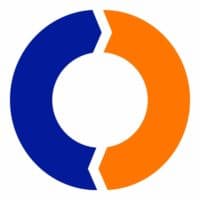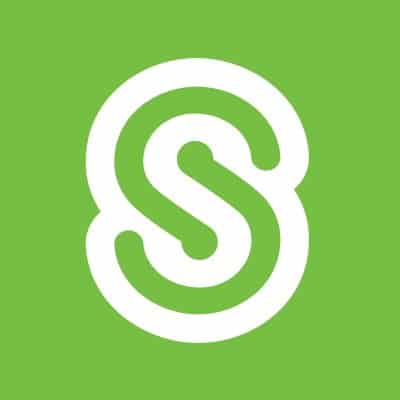
As expected, the Small Business Administration issued new guidance on PPP loan forgiveness in a May 22 release of new interim final rules. An additional memo with new interim rules outlining PPP loan review procedures and responsibilities for borrowers and lenders was also issued.
The first thing to stand out is that the clock is ticking. As indicated in the Interim Final Rules, the first PPP loans were disbursed mid-April. That means many borrowers are nearing the last half of their eight-week covered period, making this and future new guidance all the more essential to keep borrowers on track to a successful filing of their loan forgiveness applications.
A significant portion of the May 22 loan forgiveness guidance reiterates the instructions issued on May 15, but with added clarification on lingering questions having to do with payroll and non-payroll cost eligibility. The document also addresses the various scenarios that can affect how much loan forgiveness is available for borrowers.
Here are the most notable highlights from the Interim Final Rules on PPP loan forgiveness:
Clarification of Alternative Covered Period
The May 15 guidance established an alternative method for determining when the eight-week covered period begins for businesses with biweekly or weekly pay cycles. The alternative covered period starts on the date of the first payroll payment, which may include days before the regular covered period. It also includes earnings paid after the end of the eight-week covered period that were incurred during the covered period.
The new guidance clarifies that the alternative covered period is not available for monthly or semi-monthly pay cycles, which must adhere to the original covered period rule.
Clarification of payroll cost definitions
Payroll costs have been defined as “salary, wages, commissions, or similar compensation, cash tips or the equivalent, payment for vacation, parental, family, medical, of sick leave, allowances for separation or dismissal, payments for group health care coverage, including premiums, and retirement, as well as payment of state and local taxes assessed on compensation of employees.”
The amount of cash tips or the equivalent is to be based on employer records of past tips, or, in the absence of such records, a reasonable, good-faith employee estimate of such tips. It is not clear on what the term “equivalent” refers to, but it may include such things as gift cards.
Clarification of bonuses and hazard pay eligibility
Bonuses and hazard pay are treated the same as salary, wages, and commission payments to furloughed employees and are subject to the $100,000 annual salary cap.
Clarification of earnings cap
The maximum amount of earnings for an Owner – including salary, bonuses, health, and retirement plan contributions – that are eligible for loan forgiveness is limited to the lesser of $15,385 or 8/52 of their 2019 earnings. This includes earnings across all businesses.
The same cap applies to self-employed individuals, including Schedule C filers and general partners, except that their retirement and health insurance contributions cannot be included as compensation eligible for forgiveness.
Clarification on rehiring employees
Borrowers have until June 30 to rehire employees and reverse earnings reductions to restore loan forgiveness.
The new guidance also reiterates earlier guidance stating that employers can exclude from loan forgiveness reporting employees who declined to be rehired. In calculating the reduction in full-time equivalent (FTE) employees, employers can exclude any employee refusing a good faith offer to return at their previous rate of pay and hours. The new guidance emphasized that employers must notify their state unemployment department of a refused offer within 30 days of that refusal.
Clarification of non-payroll costs definitions
Interest and rent payments: The new guidance confirms that “interest payments on any business mortgage obligation on real or personal property that was incurred before February 15, 2020 (but not any prepayment or payment of principal)” qualifies as forgivable non-payroll costs. Based on the language, it appears that the debt does have to be secured by a mortgage or collateral.
Also, for debt arrangements that existed between related third parties before February 15, 2020, there doesn’t appear to be a prohibition against increasing the interest payable on debt to a fair market value rate. This also applies to rental or lease agreements between related parties, where the rent payment is increased to fair market value.
For borrowers allowed by their landlords to defer rent payments from before the covered period, those payments must be paid during the covered period to qualify as a forgivable cost.
Clarification of timing of non-payroll costs
Non-payroll costs incurred or paid during the eight-week period are eligible for loan forgiveness. Costs that are incurred during the period and paid on or before the next regular billing date are eligible even if the date is outside the eight weeks.
Advanced payments on mortgage interest do not qualify for loan forgiveness.
Clarification of the 75% rule calculation
The new guidance emphasizes that the total non-payroll costs – interest, rent, and utility payments – can be forgiven up to 25% of the loan amount based on the payroll costs included in the forgiveness amount. For example, if the loan amount is $200,000, and the borrower has $50.000 in non-payroll expenses (25% of the loan amount), but only $140,000 of total payroll costs (70% of the loan amount), the forgivable non-payroll expenses are reduced to $46,666 to boost the payroll expenses to 75%.
Highlights from Interim Final Rules on Loan Forgiveness Process
The SBA also issued new Interim Final Rules outlining the “Loan Forgiveness Process. In short, the new rules place primary responsibility on borrowers to correctly follow the process but also provide lenders with additional guidance on procedures.
Here are most of the significant provisions:
- The SBA may review any PPP loan at any time, regardless of size, to determine eligibility for PPP loans. Specifically, the SBA will look to see if the loan amount was calculated correctly, whether the borrower was eligible for the amount requested, and whether the funds were used for eligible costs.
- If the SBA determines a borrower was ineligible, “the SBA may seek repayment of the outstanding PPP loan balance or pursue other available remedies.”
- Borrowers can appeal any SBA determination within 30 days of receipt. The appeals process has yet to be established but is expected in a later interim final rule.
- The borrower is responsible for providing the lender with an accurate accounting of forgiveness.
- Lenders must render a decision on loan forgiveness within 60 days of receipt of the forgiveness application. The SBA then has 90 days to review the application.
- Both the lender and the SBA may follow up the application with questions for the borrower.
- Lenders will not be paid any fees for PPP loans the SBA deems ineligible.
With the eight-week clock running out on many businesses, we can expect a flurry of new guidance memos, so stay tuned. There’s also a strong indication that Congress will act on legislation to extend the eight-week covered period, perhaps to the end of the year. There is also growing support for reducing or eliminating the 75% requirement. That is still speculation at this point, so it would be essential to plan based on the current structure and stay in touch with your advisor whose job is to keep on top of these issues.
Want to RECEIVE COVID-19 UPDATES?
Enter your email below and we'll keep you updated!






